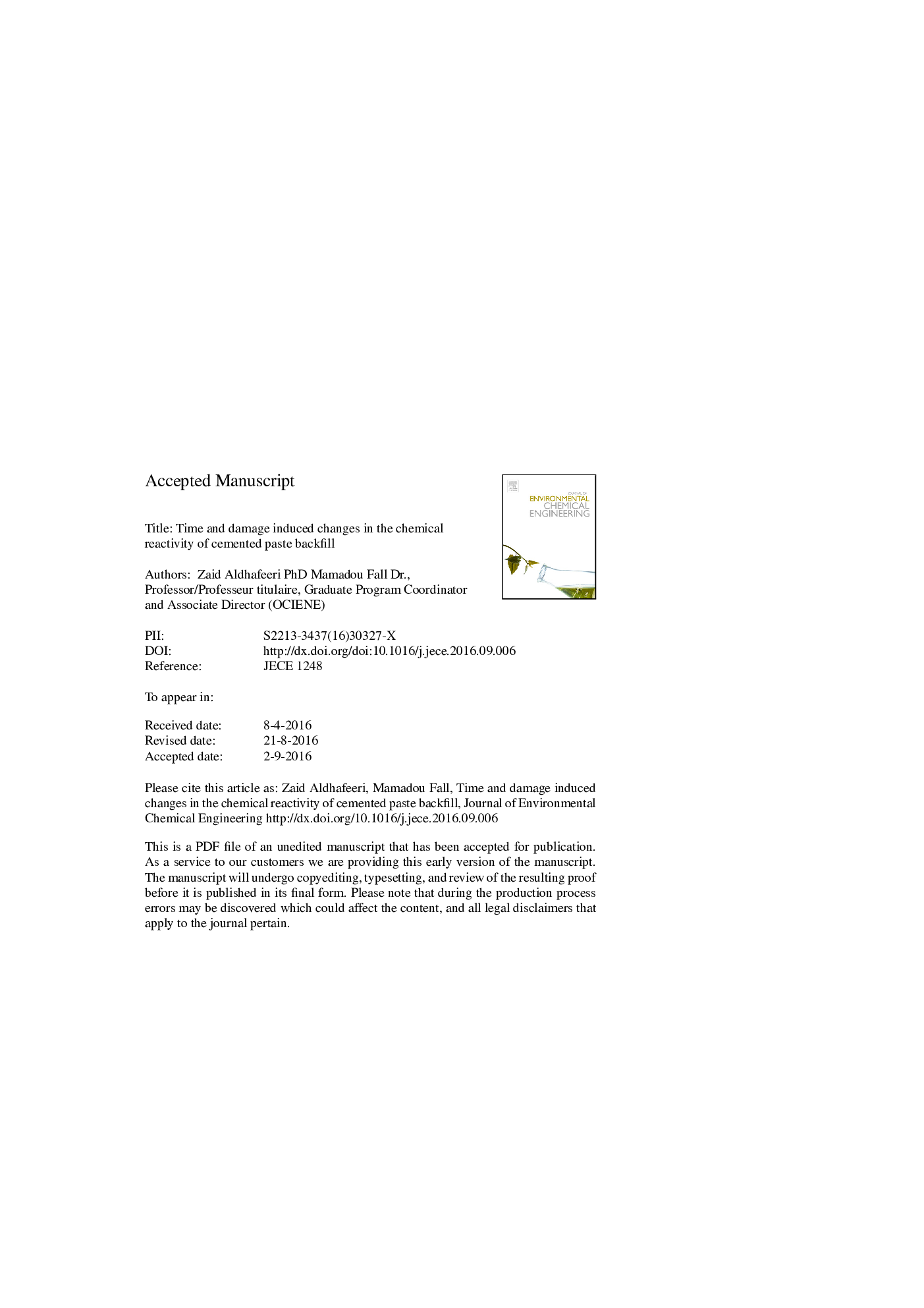| Article ID | Journal | Published Year | Pages | File Type |
|---|---|---|---|---|
| 4908578 | Journal of Environmental Chemical Engineering | 2016 | 43 Pages |
Abstract
The chemical reactivity of cemented paste backfill (CPB) plays a significant role in its durability and environmental behavior. Therefore, the reactivity of sulphide bearing tailings incorporated into CPB systems should be assessed to avoid or prevent adverse potential environmental effects. The objective of this study is to therefore experimentally assess the influence of time and mechanical damage on the reactivity of CPB samples prepared with tailings that contain different pyrite contents (up to 45Â wt.%). Oxygen consumption (OC) tests are conducted on undamaged and mechanically damaged CPB specimens cured at different times to study their reactivity. Furthermore, the microstructural changes of the tested CPB samples are investigated by conducting microstructural analyses (e.g., scanning electron microscopy with energy dispersive X-ray spectroscopy, mercury intrusion porosimetry, and thermogravimetry/derivative thermogravimetry). The obtained results show that the reactivity of CPB is time-dependent. The reactivity decreases as the curing time and ageing of the CPB increase. It was also found that the microstructure or pore structure of CPB significantly affects its reactivity. The encapsulation or coating of the tailings particles with cement hydration products also contributed to the reduction of the reactivity of CPB. It is also found that the reactivity of CPB increases as the level of damage is increased. A relationship between the increase in reactivity and level of mechanical damage can be established.
Related Topics
Physical Sciences and Engineering
Chemical Engineering
Chemical Engineering (General)
Authors
Zaid PhD, Mamadou (Dr., Professor),
